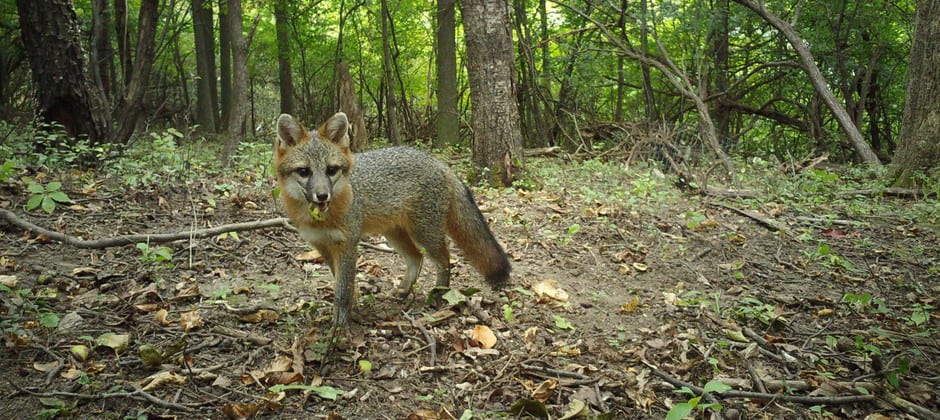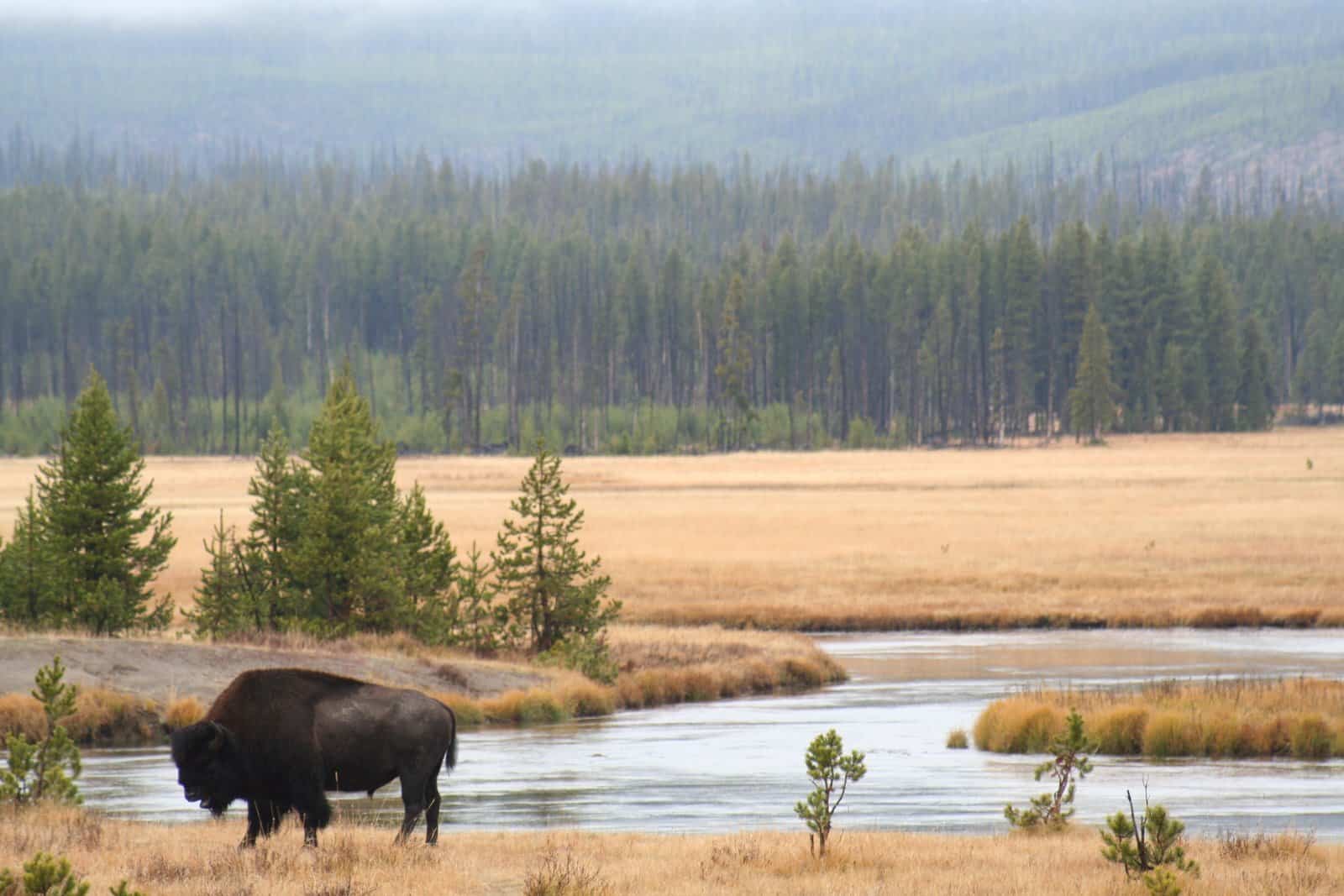Share this article
Gray foxes and coyotes coexist in the suburbs
As coyotes expand their range in the United States and gray foxes decline throughout the country, researchers wondered what spaces the two competitive species occupy.
Over the past century, coyotes (Canis latrans) have been establishing populations in the northeastern United States, in states like North Carolina. Gray foxes haven’t shown a strong signal of decline there yet, even though coyotes are known to harass and even kill gray foxes. Researchers think that may be because coyotes are more newly established in North Carolina.
Researchers in North Carolina had already been looking at how coyotes, red foxes (Vulpes vulpes Linn), gray foxes (Urocyon cinereoargenteus) and bobcats (Lynx rufus) were coexisting across an urban gradient using camera traps set up by citizen scientists.
They found that gray foxes seemed to be doing really well in suburban areas., They thought this was because they were using them as a refuge from coyotes during certain times.
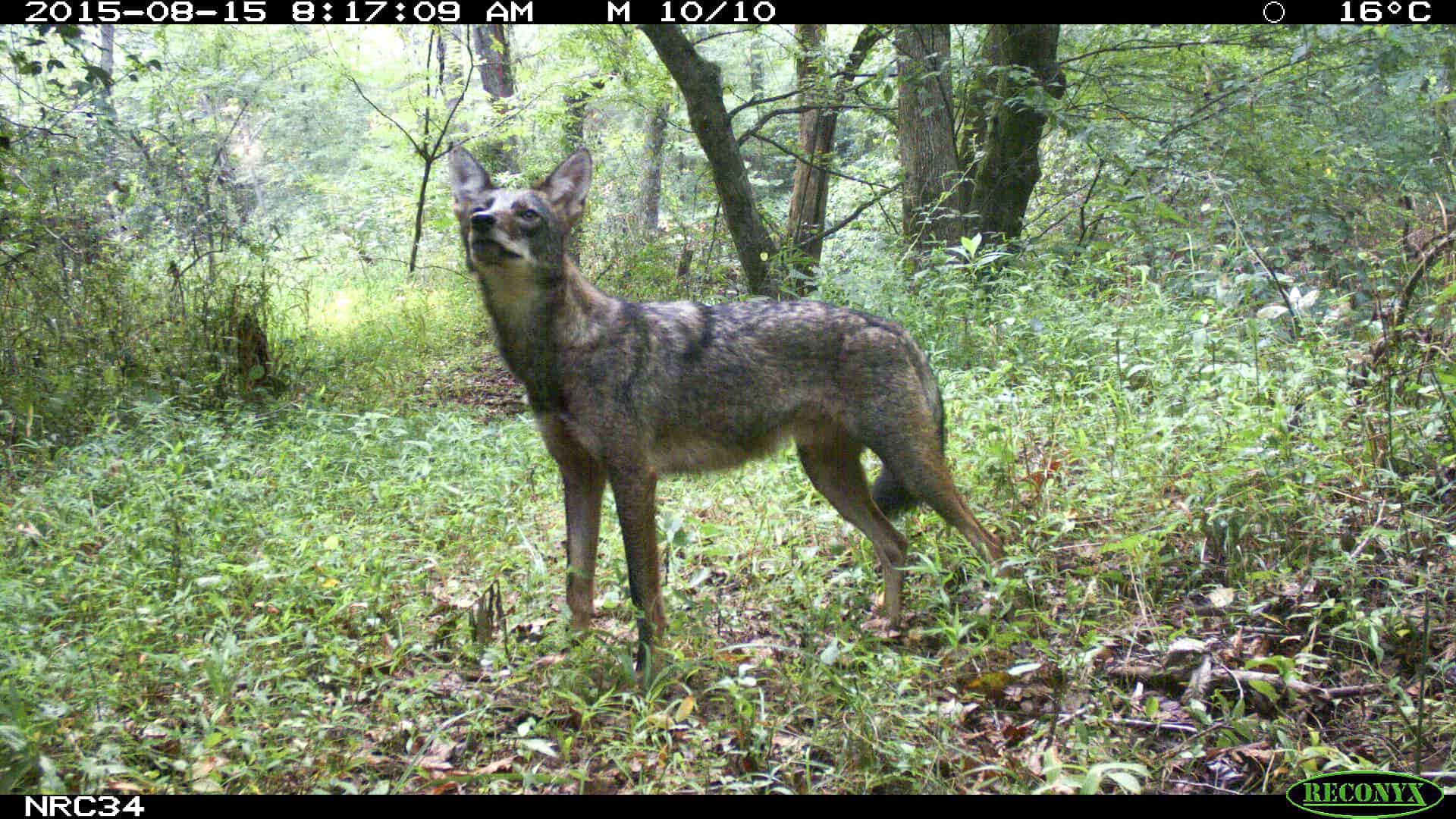
Coyotes sometimes harass and even kill gray foxes. Credit: Arielle Parsons
But in a study published recently in Ecosphere, that same team found that coyotes and gray foxes are actually occurring in the same suburban areas at the same time.
“That was surprising,” said Arielle Parsons, lead author of the study and a postdoctoral scholar at North Carolina State University at the time of the research. “Our hypothesis going in was that they were using these suburban sites at different times. We actually found the opposite.”
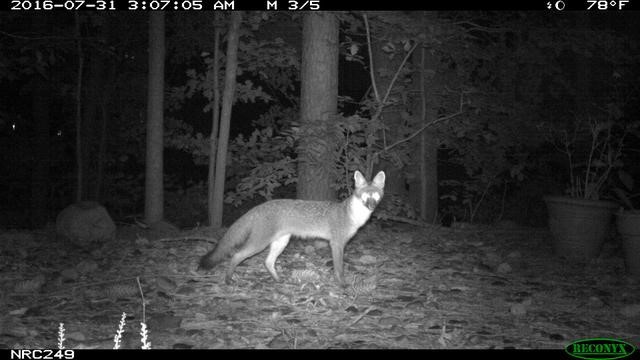
Gray foxes became more nocturnal in rural areas where coyotes were more prevalent.
Credit: Arielle Parsons
To conduct the study, Parsons and her colleagues tapped into a volunteer scientist project, where people set up camera traps in rural, ex-urban, suburban and urban areas in the state. The team collected 347 coyote photos and 943 gray fox photos and created a model to determine when and where the two species were likely to be found together.
The data revealed that gray foxes and coyotes used the same suburban areas at the same times. These areas had high housing density and low forest cover.
There are a couple reasons why that could be, Parsons believes. There may be enough food in suburban areas to go around for both coyotes and foxes. Or it could be there’s just little choice of habitats and green space in these areas. Foxes and coyotes may not have an alternative other than to coexistence.
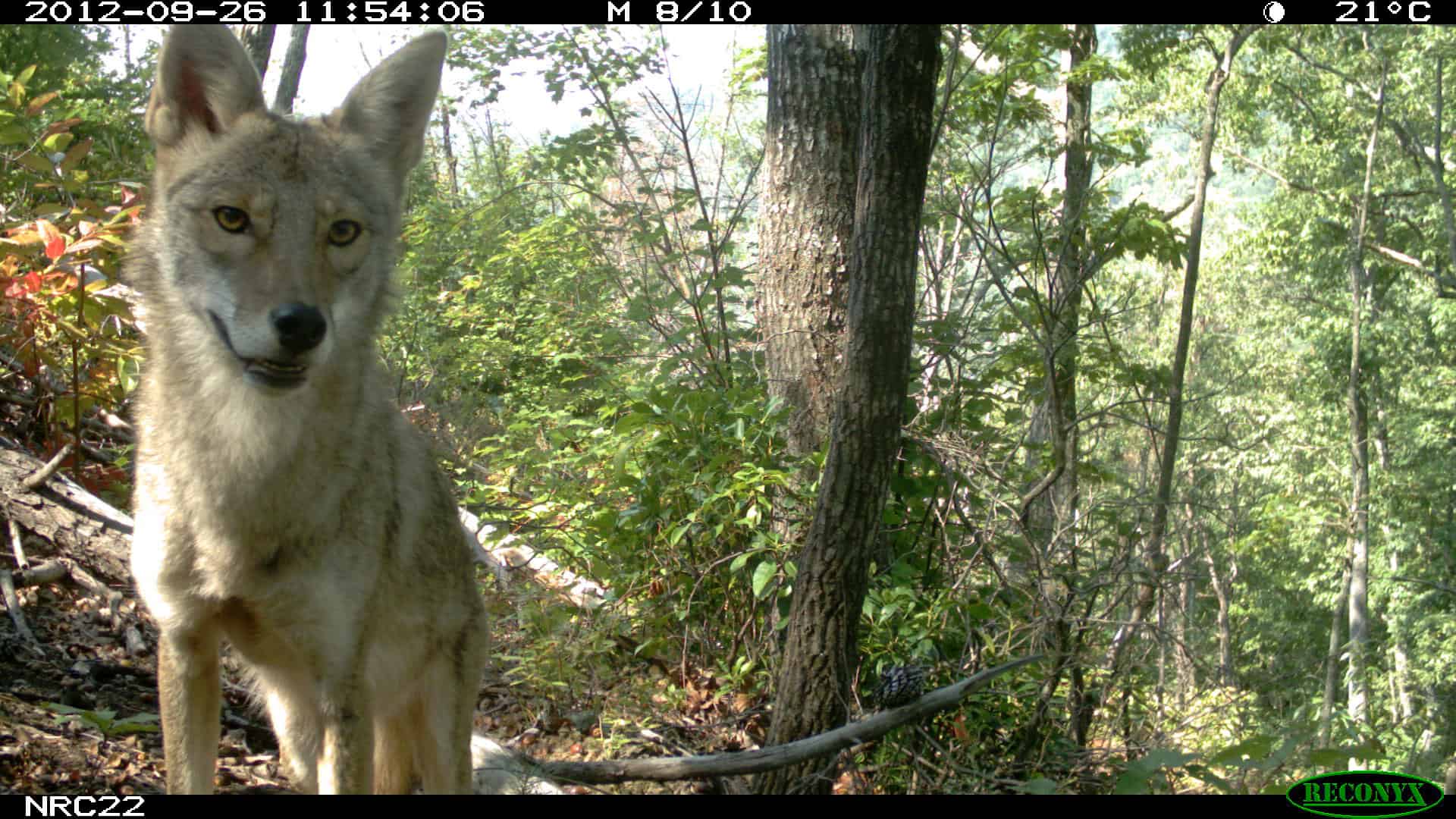
Coyotes like this one have more recently spread throughout the northeastern U.S. Credit: Arielle Parsons
The researchers were also surprised by what was happening in rural areas. There, gray foxes were less likely to use the same sites as coyotes, and had shifted their activity pattern to being more nocturnal and avoiding sites coyote used. “There’s a lot of evidence of negative interaction of gray foxes avoiding coyotes in rural areas but not in suburban areas,” said Parsons, now a research scientist with the Lincoln Park Zoo.
One reason is they may lack the space to avoid one another. There are also more coyotes in rural areas, which may cause gray foxes to work harder to avoid them.
Parsons said the findings suggest that in rural areas, gray foxes may benefit from additional vegetation. “With more forest cover, they’re more likely to coexist,” she said. That’s likely because gray foxes can avoid coyotes by climbing up trees using semi-retractable claws. “They’re one of the only climbing species of dogs,” she said.
In the suburban areas where the two species are already coexisting, Parsons said it’s important to maintain and create more green space for them to use. “I think we’re recognizing more and more how suburban areas are filling roles for habitats of wildlife,” she said. “Green spaces in those suburban areas are allowing wildlife to navigate through these human dominated spaces to coexist with humans and with each other.”
Header Image: Gray foxes are declining throughout the Midwest, but researchers haven’t found strong declines yet in the Northeast. Credit: John Vanek/Snapshot USA



